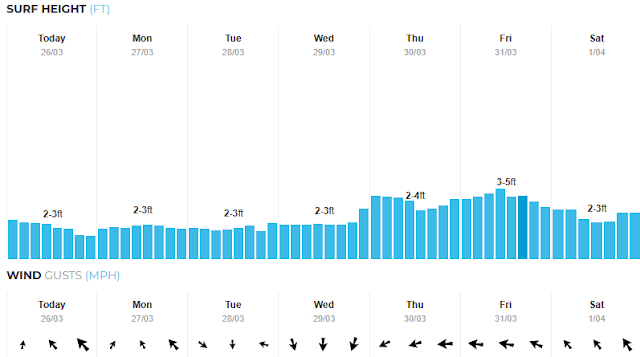Written by the Treasureguide for the exclusive use of the Treasure Beaches Report.
I found the item shown below a long ago, but it is still a mystery item for me. It could be a gorget. That is my best guess at this point. It was found at a site in the Caribbean where the British and French fought right around 1800. Of course all sites have a long and continuous history, but most of the things I was digging when I found the mystery item came from around the time of the battle.
I found two of those items not far apart. That seems to add some weight to the idea that it could be a gorget. One is slightly larger than the other. So again, that seems to fit. After all this time, I am still not highly confident that I know what the item really is.
I just looked at it with high magnification, but didn't see anything that helped,
I can't explain the middle hole, but both of the ones I found have three holes. Perhaps there was another connector or a decoration. At this point I don't think I'll ever know.
 |
| Mystery Find From 18th or Very Early 19th Century Site. |
Yesterday I posted pictures of a marble showing shiny hexagonal flakes on the surface. I wondered how they got there and what they are. I found something that might answer the question.
The following comes from the oldraremarbles site (link below).
Micas are early German handmade marbles (many with a faceted pontil, indicating manufacture before 1880) and are made of transparent glass with subsurface silvery mica flakes that take on the color of the matrix glass they’re submerged into. Most common matrix glass colors are clear, various shades of amber or brown, various shades of blue from light blue to deep cobalt blue, and various shades of green from teal to dark army green...There are several RARE varieties of onionskins:
- Onionskin Lutzes are onionskins with lutz (metallic copper flakes that have a gold-like appearance). Generally speaking, the more lutz the more interest the onionskin lutz will have among collectors.
- Blizzard Onionskin Micas are rare. They have heavy mica that is suspended in the clear casing glass above the onionskin core.
- Paneled Mica Onionskins are rare too, where the mica is organized into distinct panels on or above the core....
Most common sizes for Onionskins are 9/16” to 7/8”. Any Onionskin over 1” will generate a premium. Onionskins are often found approaching 2-1/2” but demand a steep premium. Peewee Onionskins are not particularly uncommon but do demand slightly more than a typical 5/8” Onionskin would.
Rare varieties are rare in all sizes and especially anything over 3/4” or in the peewee class...
Looking through the marbles I've found, I found three that have mystery specs. Maybe they are mica, but I don't know. I showed one of those yesterday.
Once you start investigating your finds you'll learn something even if doesn't necessarily answer your question. That is one of the fun activities and big benefits of metal detecting. You'll discover some things quickly while other mysteries won't be answered as quickly. And sometimes you will change your mind two or three times.
I picked up marbles over a long period of time. I just kep them without doing much research until very recently. I started out completely ignorant so I'm learning a lot very quickly now.
You might think some items are both uninteresting and lacking value, but that can quickly change, as it did for me, as I started to learn about antique and vintage marbles.
I'm also discovering the commonality between how antique marbles and bottles were made. Both were blown and shaped in molds in a very similar way.
---
The variety of interesting things that can be found can be overwhelming, but it is always challenging, interesting, informative and entertaining.
I never liked the idea of passing up something of value simply because it was not the one kind of thing I went out to find on a particular hunt. And I don't like passing up items of value simply because I was unaware of the possible value. To me, that is like hunting with blinders on.
I didn't know much about the value of marbles but liked finding them anyhow. I was surprised to learn that even fairly common ones can be worth a few bucks and how many can be worth thousands of dollars. I picked them up, not knowing much about them, but they really came alive to me as treasures after I started doing the research and learning more about them.
Don't be too quick to discard finds that you don't know much about. You might value them more highly after you study them.
I don't always define the value of items in economic terms. As I said, items can be interesting, informative, aesthetic or simply entertaining. And in some items you might be able to find a deeper meaning - maybe even a message.
With so many things to do and so many things to discover, you might feel your time is all too rare. Time is perhaps the most valuable treasure of all - and very much what you make of it.
---
Nothing special in the forecast.
Good hunting,
TreasureGuide@comcast.net


